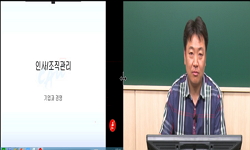Since 2010, China's economic rise, increased influence on neighboring countries, and the goal of countering U.S. military intervention through the strengthening of its Anti-Access Area Denial (A2/AD) capabilities have intensified strategic competition...
http://chineseinput.net/에서 pinyin(병음)방식으로 중국어를 변환할 수 있습니다.
변환된 중국어를 복사하여 사용하시면 됩니다.
- 中文 을 입력하시려면 zhongwen을 입력하시고 space를누르시면됩니다.
- 北京 을 입력하시려면 beijing을 입력하시고 space를 누르시면 됩니다.

중국의 반접근 지역거부(A2/AD) 전략에 대한 분석: 정보작전 수행역량 강화를 중심으로 = Analysis of China's Anti-Access Area Denial(A2/AD) Strategy: An Emphasis on Enhancement of Information Operations Capabilities
한글로보기https://www.riss.kr/link?id=A108635984
-
저자
최근대 (충남대학교)

- 발행기관
- 학술지명
- 권호사항
-
발행연도
2023
-
작성언어
Korean
-
주제어
중국의 반접근 지역거부(A2/AD) 전략 ; 적극방어 군사전략 ; 군사전략지침 ; 체계작전 ; 정보작전 ; 전략지원부대 ; 다영역작전 ; China's Anti-Access Area Denial (A2/AD) Strategy ; Active Defense Military Strategy ; Military Strategy Guidelines ; Systematic Operation ; Information Warfare ; Information Operations ; Strategic Support Force ; Multi-Domain Operation
-
등재정보
KCI등재
-
자료형태
학술저널
-
수록면
31-53(23쪽)
- 제공처
-
0
상세조회 -
0
다운로드
부가정보
다국어 초록 (Multilingual Abstract)
Since 2010, China's economic rise, increased influence on neighboring countries, and the goal of countering U.S. military intervention through the strengthening of its Anti-Access Area Denial (A2/AD) capabilities have intensified strategic competition between the United States and China. This has further heightened the instability of the regional security environment, increasing the potential for military conflicts. The purpose of this article is to review the U.S. assessment of China's A2/AD strategy in terms of China's threat perception and its efforts to enhance military capabilities for future warfare. Additionally, this article aims to derive alternative implications for the South Korean military.
Since 2004, China has pursued military modernization with an emphasis on informatization, changing its military strategy guidelines to focus on victory in regional warfare through informatization. Since 2015, China has further enhanced its A2/AD capabilities by emphasizing information operations and establishing the Strategic Support Force to develop information-led operations and consolidate its capabilities in the space, cyber, and electromagnetic domains. U.S. experts and the U.S. Department of Defense estimate that over 40% of China's A2/AD capabilities may be employed through non-physical information operations. However, domestic studies tend to assert that over 80% of China's A2/AD capabilities will be used to deter U.S. access to the region through physical means such as missile systems and strengthened maritime and air forces. It is essential to recognize the increasing significance of information operations in modern warfare and enhance the South Korean military's information operation capabilities while developing a realistic assessment of China's A2/AD strategy.
국문 초록 (Abstract)
2010년도 이후 중국의 경제적 부상과 주변국에 대한 영향력 확대, 그리고 미국의 군사적 개입을 차단하기 위한 반접근 지역거부(A2/AD: Anti-Access Area Denial) 역량 강화는 미·중 간의 전략경쟁을 ...
2010년도 이후 중국의 경제적 부상과 주변국에 대한 영향력 확대, 그리고 미국의 군사적 개입을 차단하기 위한 반접근 지역거부(A2/AD: Anti-Access Area Denial) 역량 강화는 미·중 간의 전략경쟁을 심화시켜 군사적 충돌 가능성이 증대되는 등 지역 내 안보 환경의 불안정성을 더욱 고조시키고 있다. 이 글의 목적은 중국이 미래 전쟁에 대비하여 군사력을 전진시키는 방법 측면에서 중국의 A2/AD 전략에 대한 미국의 평가를 검토하고, 한국군에 주는 대안적 함의를 도출하는 것이다. 중국은 2004년부터 군사전략지침을 ‘정보화(信息化) 조건 하 국부전쟁(局部战争)’에서의 승리로 변경하여 군 현대화를 추진해 왔으며, 2015년 이후 정보우위를 전제조건으로 내세운 체계작전 수행개념 발전과 우주·사이버·전자기 공간에서의 작전수행 역량 결집을 위해 전략지원부대를 창설하는 등 정보작전에 주안을 두고 A2/AD 역량을 강화하고 있다. 이와 관련 미 국방부와 연구기관에서도 중국의 A2/AD 역량 중 40% 이상이 비물리적 정보작전 수단에 의해 수행될 것으로 평가하고 있다. 그러나 국내 연구는 미군의 접근을 저지하는 데 사용되는 중국의 A2/AD 역량의 80% 이상이 미사일 시스템과 강화된 해·공군력 등 물리적 군사력이 될 것이라고 주장하는 경향이 있다. 현대전에서 정보작전의 비중이 증대되고 있는 현실적 이해와 이에 대한 한국군의 대응 역량이 강화되어야 할 것이다.
동일학술지(권/호) 다른 논문
-
- 미래군사학회
- 이강경
- 2023
- KCI등재
-
한국 청소년 리더 육성을 위한 JROTC제도 발전방안 연구
- 미래군사학회
- 권영현
- 2023
- KCI등재
-
러시아-우크라이나 전쟁 분석: 러시아의 해군력 운용과 함의
- 미래군사학회
- 최영찬
- 2023
- KCI등재
-
비대칭성 기반 중국의 군사혁신: ‘국방혁신 4.0’에 주는 함의
- 미래군사학회
- 신치범
- 2023
- KCI등재




 KCI
KCI KISS
KISS



